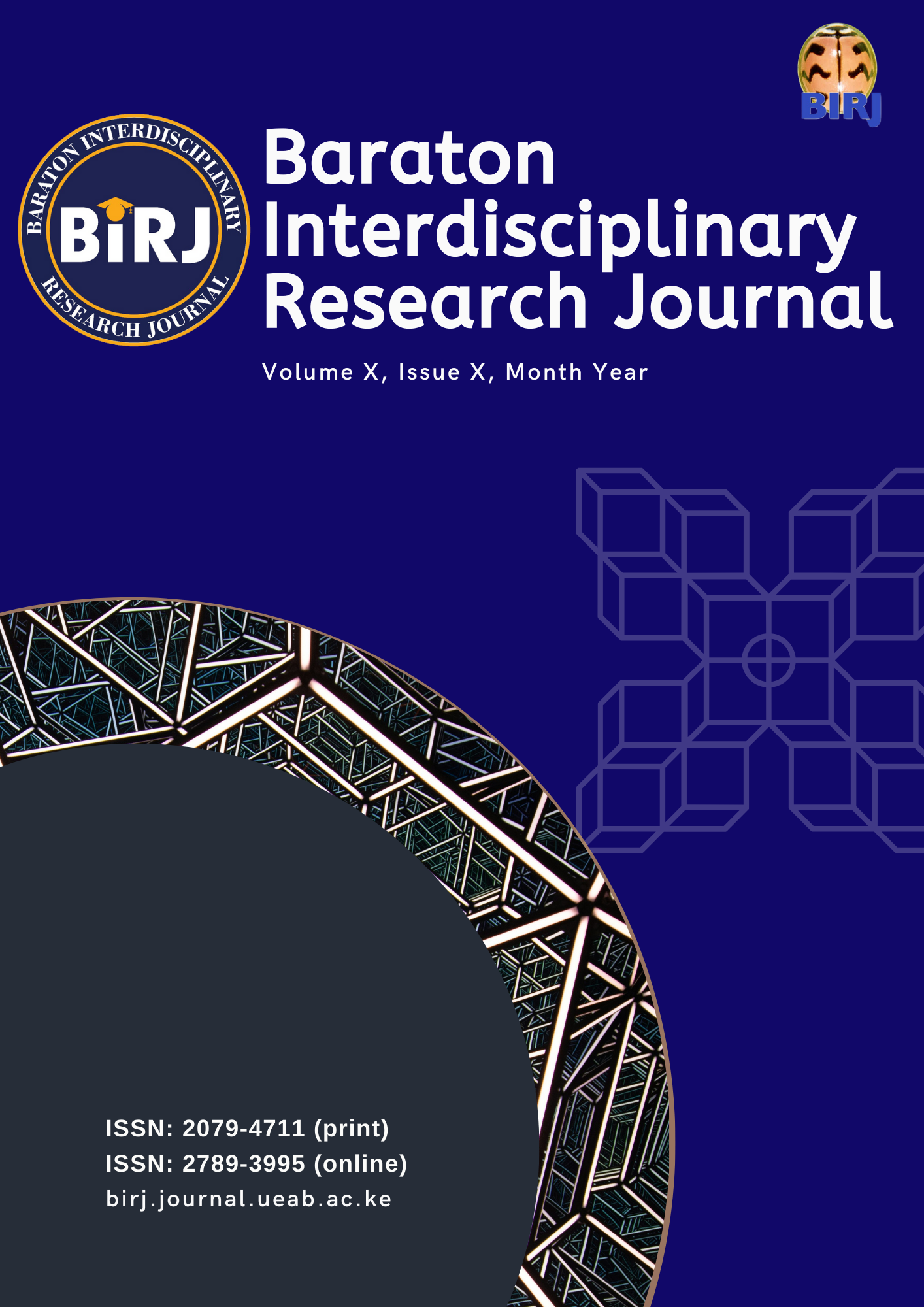EFFICACY, EFFICIENCY AND IMPACT OF LONG-LASTING INSECTICIDAL NETS UTILIZATION AND IN DOOR RESIDUAL SPRAYING: A SURVEY OF RURAL KAPTUMO LOCATION, NANDI COUNTY, KENYA
Keywords:
Insecticidal nets, indoor residual spraying, malaria prevention, intervention methodAbstract
The purpose of this study was to determine the efficiency and efficacy in the long-lasting insecticidal nets
(LLINs) and indoor residual spraying (IRS) utilization and their impact as malaria prevention intervention
method in a bid to zero rate malaria morbidity and mortality in Kaptumo location. A quantitative, descriptive
study design was employed and data from the respondents (household heads) was collected by means of self-re
ported questionnaires, which had closed ended questions. Using stratified random sampling, proportional strati
fied sampling, and convenience sampling techniques, the household heads within the location were sampled
where 343 heads were then studied. Data analysis was done using SPSS version 15 and interpretation at 95%
confidence. This study reports that majority of the respondents (74%) admitted that after the commencement of
LLINs and IRS utilization, malaria cases reduced. However, 15% of them did not know of any changes and 8%
admitting that even though there was some change, the change was still minimal. Only 3% did not have changes
that they could notice even after commencing the utilization of LLINs and IRS. Major barriers to the LLINs and
IRS identified included: Fear of chemicals where 58% of the respondents admitted to having the effects; and
other uses other than the beds in which 44% of the respondents admitted that they could use the LLINs on the
seed bed, with 34% believing that they could also be used on the chicken pens, and 22% on the walls for beauty
purposes.
Downloads
Published
Issue
Section
License
License Terms
All articles published in the Baraton Interdisciplinary Research Journal (BIRJ) are licensed under a Creative Commons Attribution-NonCommercial-ShareAlike 4.0 International License (CC BY-NC-SA 4.0).
This license permits users to share (copy and redistribute) and adapt (remix, transform, build upon) the material for non-commercial purposes, provided that proper attribution is given to the original authors, a link to the license is included, and any derivative works are distributed under the same license.
Full license details: https://creativecommons.org/licenses/by-nc-sa/4.0/
Most read articles by the same author(s)
- Evance Odiwuor Oluoch, Helmut Khol, PSYCHO-SOCIAL FACTORS INFLUENCING POST-DIAGNOSIS CHOICE OF TREATMENT BY WOMEN SEEKING BREAST CANCER CARE AT MOI TEACHING AND REFERRAL HOSPITAL , Baraton Interdisciplinary Research Journal: Vol. 10 (2024): Special Issue

